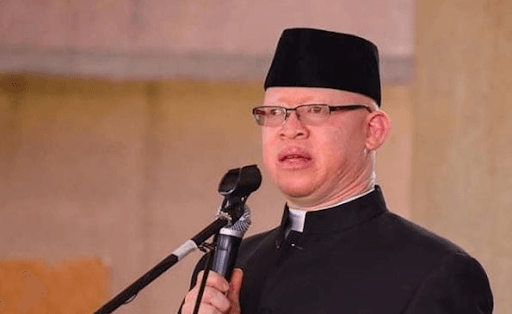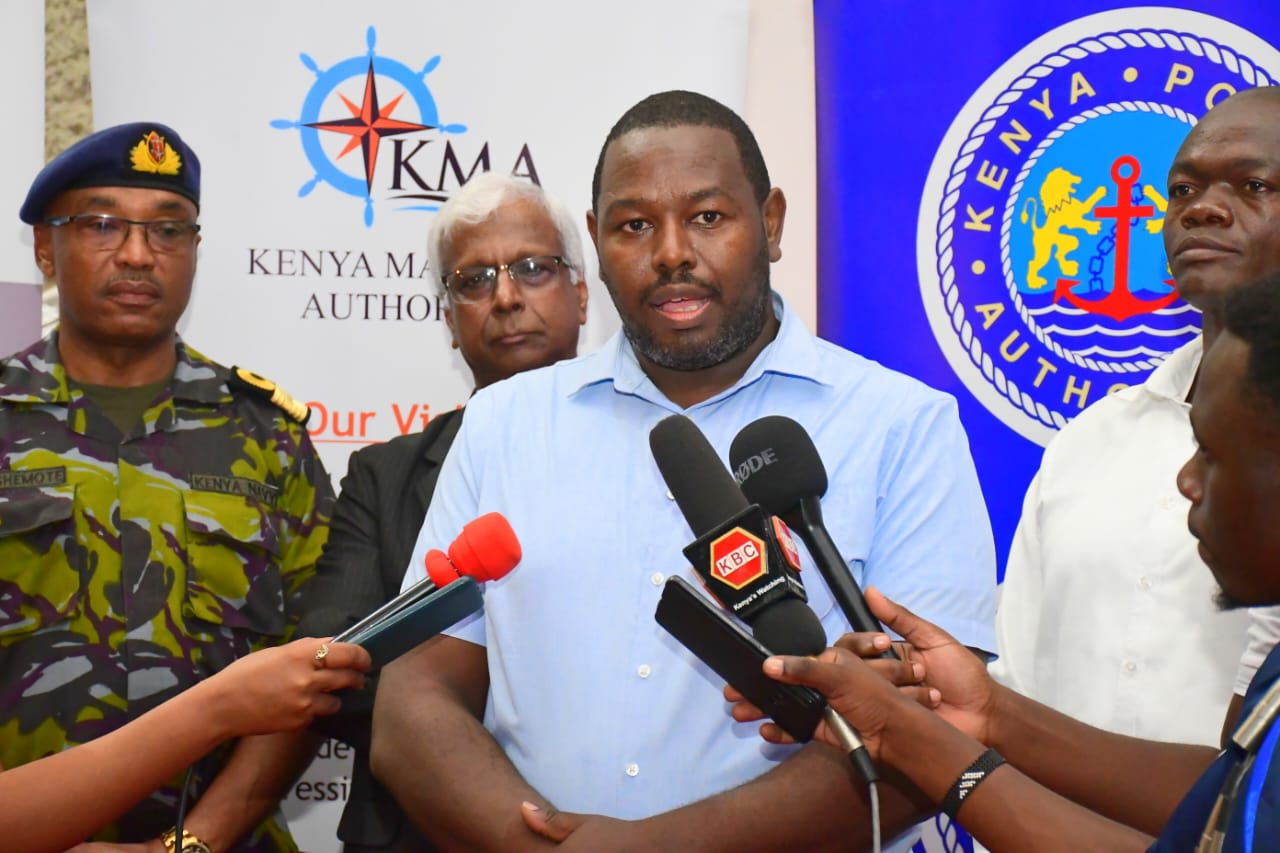
 Kenya Maritime
Authority (KMA) Director Maritime Safety Julius Koech briefs the media during the
launch of the MASEPOLREX25 - maritime spills pollution response exercise at
Bandari Maritime Academy.
Kenya Maritime
Authority (KMA) Director Maritime Safety Julius Koech briefs the media during the
launch of the MASEPOLREX25 - maritime spills pollution response exercise at
Bandari Maritime Academy.Kenya is stepping up its efforts to protect the region’s
marine environment with a large-scale oil spill simulation exercise taking
place in Mombasa this week.
The five-day Maritime Search and Pollution Response Exercise began on Monday, bringing together maritime experts, emergency responders and regional partners for hands-on training in oil spill preparedness and response.
The drill is being held at Bandari Maritime Academy and along Nyali Beach, simulating a high-impact maritime incident, a collision between two oil tankers near the Kenya-Tanzania border, resulting in a major oil spill.
Led by the Kenya Maritime Authority (KMA), in collaboration with the Kenya Navy and Kenya Ports Authority (KPA), the exercise aims to test national and regional oil spill response mechanisms, emergency coordination and joint action under real-time conditions.
“We are simulating a complex maritime crisis, activating the National Oil Spill Contingency Plan and bringing together a multi-agency team that includes both government and non-state actors,” said Julius Koech, KMA’s director of maritime safety and the exercise coordinator.
Specialised vessels, including KPA’s Mwokozi, Tangulizi, and Duma, as well as the Kenya Navy’s Shupavu, have been deployed for the offshore response.
Onshore, teams are participating in a mock shoreline cleanup operation along Nyali Beach, simulating how spilled fuel would be contained and cleared if it reached the Kenyan Coast.
Koech said Kenya has made major investments in training and equipping oil spill responders, as well as establishing a dedicated fund to support cleanup efforts.
“We have steadily built our capacity over the years. Our agencies are better equipped and more coordinated. Exercises like this help us stay ready,” he said.
The regional field exercise is being supported by the Indian Ocean Commission (IOC), with IOC representative Raj Mohabeer praising Kenya’s preparedness and structured approach to oil spill response.
“Kenya’s plan is well developed and operational. We want other countries in the region to learn from this model. The goal is to build a collective framework for the Western Indian Ocean region under the Nairobi Convention,” Mohabeer said.
He pointed to the 2020 Mauritius oil spill as a wake-up call for the region and stressed the need for shared strategies in dealing with marine pollution.
Kenya Navy Fleet Commander Brigadier Mohamed Shemote described the simulation as a critical part of the region’s maritime security strategy.
“Oil spills don’t respect borders. A spill in Mombasa can easily affect Tanzania or Somalia. That’s why coordination and joint drills like this are so important,” he said.
KPA managing director Captain William Ruto said the exercise is timely, especially as the country looks to test the strength and readiness of its National Oil Spill Contingency Plan.
“This exercise will help us assess our current capabilities, sharpen inter-agency coordination and ensure we are ready to respond swiftly and effectively when real incidents occur,” Ruto said.
He added that as the authority responsible for port safety, KPA plays a key role in planning, resourcing and responding to any oil spills that could impact port operations both within and outside harbour limits.
The drill runs until Friday and marks the second major oil spill simulation exercise in the region, following a similar drill in 2023.












